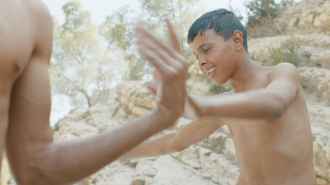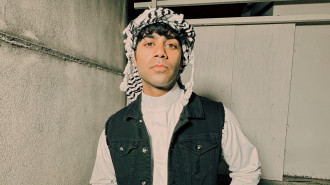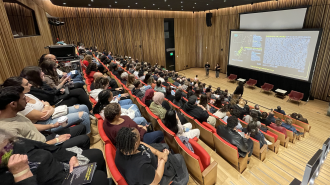'It is Palestine, and so it will remain': Argentinian artists showcase Palestinian solidarity
The contemporary conceptual artist, Leon Ferrari (1920-2013) hardly produced a single artistic work that didn’t provoke controversy – his creations often sparked protest, with his detractors calling for their removal from exhibitions.
In 1965, during the Vietnam War, he took part in an art competition organised by the Torcuato di Tella Institute in Entre Ríos in Argentina, with a collection of works centred on religious-political topics. Among them was an installation entitled Western and Christian Civilization, in which a life-size model of Christ hung crucified on an American fighter jet.
The work sparked outrage in Argentina's religious and political circles. Among those voicing strong criticism was Cardinal Jorge Mario Bergoglio (who was to become Pope Francis in 2013 – the first Latin American pope). The institute told the Argentine painter and sculptor that he had to remove the offending installation if he wished to take part in the competition.
"Ferrari reiterated his staunch opposition to Western-Christian civilisation and his fiercely critical stance of the Argentinian dictatorship, Western imperialism and the Catholic Church"
He took it down, in contrast to how he would behave later on in his career. In spite of this, the remaining artwork on display at the exhibition also met strong disapproval, which he responded to with another artwork entitled "Written Painting".
In this work, entirely composed of hand-written lines, Ferrari reiterated his staunch opposition to Western-Christian civilisation and his fiercely critical stance of the Argentinian dictatorship, Western imperialism and the Catholic Church. It was a stance that would earn him a central position in the political protest art movement in Argentina, and for which he would pay a staggering price.
In 1976, he fled to Sao Paulo in Brazil with his family in the face of mounting threats against him by the dictatorial regime, leaving behind his son Ariel who preferred to stay in his homeland. Two years into his exile, from which he would not return until 1991, he learnt that his son had been "found dead".
|
|
In Brazil, Ferrari discovered new forms of expression - sketches, lithographs, photography – even branching into writing books – which would complement his artistic style and output, which had its roots in ceramic sculpture. He began to work on mixed carvings of wood, plaster and cement, and installations constructed with wires, plastics and ceramics.
He also began to make collages, mixing drawings with photographs and newspaper clippings, over which he would superimpose his own handwritten passages. The writing was the way he communicated with his daughter who had gone deaf at an early age due to meningitis, and it also played a huge part in his art until the end of his life, although it was unreadable a lot of the time.
An example is in "Message to a General" (1963), where the illegible scrawl seems to hint at his conviction of the impossibility of communicating with a military dictatorship.
"The exhibition showcased the work of dozens of visual artists who used their creativity to express their solidarity with the Palestinian people"
Argentina's dictatorship had ended by the early eighties. However, Leon Ferrari remained a committed opponent to wars and occupations, and stood firmly with the right of all peoples for freedom, dignity and justice, wherever they were.
At an exhibition entitled Artists for Palestine, which was held in the Palestinian embassy in Buenos Aires from 30 October to 24 November this year, his work Gaza (2008) was shown, which he produced in the aftermath of Israel's assault on the besieged enclave which lasted 21 days (27 December 2008 - 18 January 2009).
The art piece is a collage combining newspaper clippings on which headlines and articles on Israel's crimes in Palestine can be discerned, along with photographs of several prominent Israeli and American politicians, alongside others depicting the war's victims: children next to bombed-out homes, bodies of the dead, and funeral processions.
|
|
All this is laid out against a background of plain paper, on which the artist has written passages in black and a deep red ink, which drips downwards in places, like drops of blood. Stark condemnation of Israel can be read in some of the lines, while others are impossible to make out, resembling barbed wire more than words.
In addition to Leon Ferrari, the exhibition showcased the work of dozens of visual artists who used their creativity to express their solidarity with the Palestinian people and their condemnation of the Zionist occupation which has spanned more than 70 years. Among them were Luis Filipe Noe (1933), one of Argentina's most outstanding artists alive today, who shared a painting called Free Palestine.
It depicts a demonstration of Palestinians carrying their national flag and banners on which keys and eyes are drawn with lines, which form the pattern of the Palestinian keffiyeh. There is writing on the banners, which is mostly illegible apart from the words "Free Palestine" in Arabic. Everything is in black and white except the Palestinian flag which has a central position and is in its actual colours.
Another prominent artist who took part was sculptor Ricardo Longhini (1949) whose work, Sabra and Shatila (2008), was displayed. The piece was an installation made from aluminium, square in shape and hollowed out. In the centre is a smaller square, from which the rusty handle of a weapon protrudes. From it, the thick rust has seeped downwards, dripping over the words: "1982 Sabra & Shatila".
Another Argentinian artist to take part was Adolfo Pérez Esquivel (1931) who was awarded the Nobel Peace Prize in 1980. Two recent works of his on Palestine were displayed. Other artworks shown were The Key by Santiago Plaza, Palestine Exists and Resists by Luis Morado, S/T by Oscar Suárez, It is Palestine, and so it will remain by Alejandro Vacos Vergara, Intifada by Monstera Josefina and Romina D'Andrea, and The Appearance by Tania Mastriano. A poem by Argentinian poet, Vicente Zito Lema (1939) was also included.
This is an edited translation from our Arabic edition. To read the original article click here.
Translated by Rose Chacko
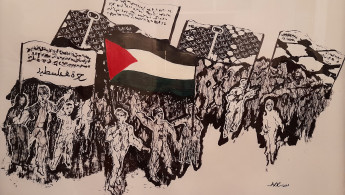


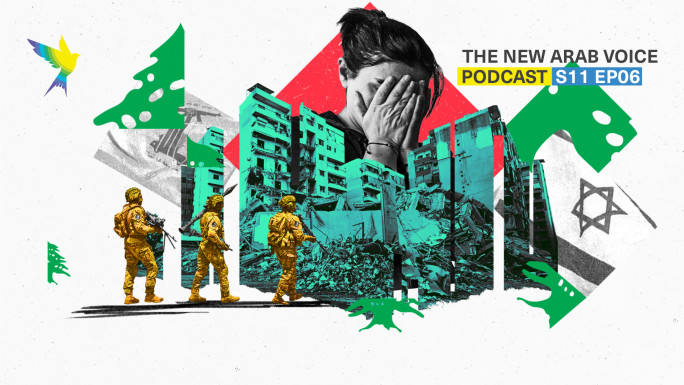
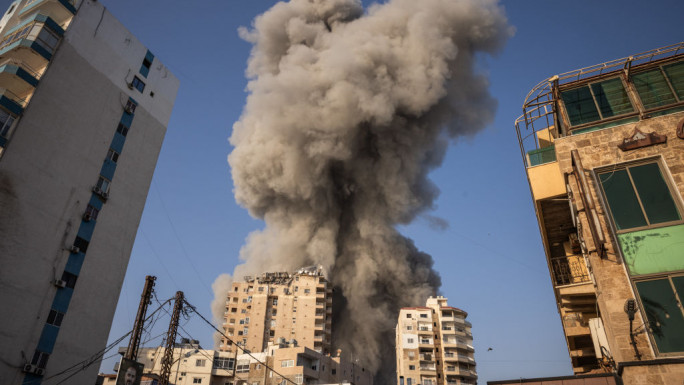
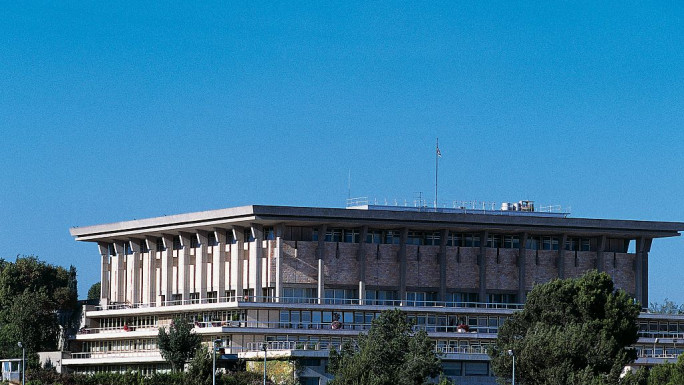
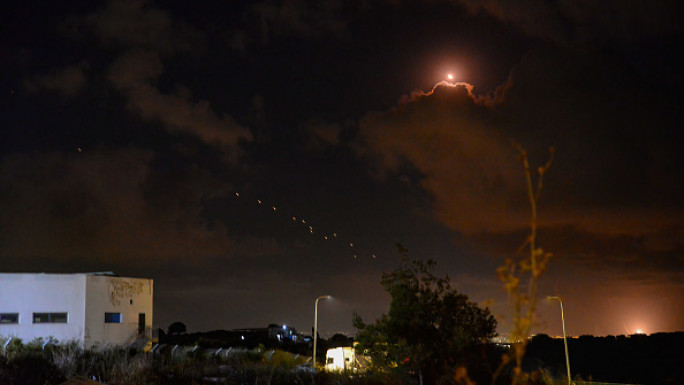
 Follow the Middle East's top stories in English at The New Arab on Google News
Follow the Middle East's top stories in English at The New Arab on Google News
